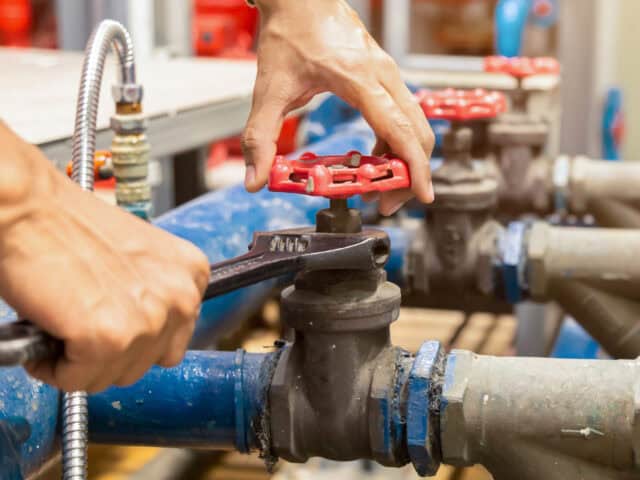In an era where sustainability and water conservation are becoming increasingly important, rainwater collection systems have emerged as an efficient and eco-friendly solution for plumbing. Whether you’re looking to reduce water bills, ensure a backup water supply, or contribute to environmental conservation, installing a rainwater harvesting system can offer numerous advantages. This blog post explores the many benefits of using a rainwater collection system for plumbing in homes and businesses.
1. Significant Cost Savings
One of the primary motivations for installing a rainwater collection system is the potential for cost savings. Water bills can add up quickly, especially in households or businesses that require a large volume of water for activities like gardening, cleaning, and flushing toilets. By utilizing harvested rainwater, you can reduce reliance on municipal water supplies, leading to lower monthly bills.
Furthermore, many regions offer financial incentives, tax credits, or rebates for installing rainwater harvesting systems, making it a cost-effective investment in the long run.
2. Reduces Dependence on Municipal Water Supply
As populations grow and climate change affects weather patterns, many municipalities face water shortages. Rainwater harvesting reduces dependence on these stressed water supplies by providing an alternative source of water. This not only helps preserve local water resources but also ensures that you have access to water even during droughts or supply disruptions.
3. Environmentally Friendly and Sustainable
Water conservation is a crucial aspect of sustainability, and a rainwater collection system helps in multiple ways:
- Reduces stormwater runoff: When rainwater flows off roofs and paved surfaces, it can contribute to erosion, flooding, and water pollution. Capturing this water for use prevents these issues.
- Less energy consumption: Treating and distributing municipal water requires significant energy. Using harvested rainwater reduces the demand for processed water, leading to lower carbon emissions.
- Supports local ecosystems: By reducing the demand for groundwater and surface water sources, rainwater harvesting helps maintain natural water cycles and habitats.
4. Better Water Quality for Non-Drinking Uses
While rainwater is not typically recommended for direct consumption without proper filtration and purification, it is naturally soft and free from many contaminants found in tap water. This makes it ideal for various non-potable uses such as:
- Flushing toilets
- Laundry washing (less detergent required due to softer water)
- Irrigating gardens and landscapes
- Washing cars and outdoor surfaces
Soft water also prevents the buildup of mineral deposits in pipes and appliances, extending their lifespan and reducing maintenance costs.
5. Emergency Water Supply
Having a rainwater collection system can serve as a backup water source in times of crisis. Natural disasters, pipeline failures, or municipal water contamination can leave households without water. A stored supply of rainwater ensures that essential needs, such as hygiene and sanitation, can still be met even if public water systems fail.
6. Increases Property Value
Homes and businesses with sustainable features, including rainwater harvesting systems, are often more attractive to buyers. Green technology and water-saving features can enhance property value, making it a wise investment for homeowners looking to future-proof their properties. If you’re considering an installation, check out hi-techplumbingandair.com/ for expert guidance on rainwater harvesting solutions.

7. Customizable to Suit Various Needs
Rainwater collection systems come in many forms, from simple barrel setups to more complex, integrated plumbing systems. Whether you’re installing a small-scale system for garden irrigation or a large underground cistern for whole-house plumbing, there are options available to fit different budgets, property sizes, and water needs.
Basic Components of a Rainwater Harvesting System:
- Catchment area (e.g., roof)
- Gutters and downspouts
- First-flush diverter (to remove debris and contaminants)
- Storage tank or cistern
- Filtration and purification system (if needed)
- Pumps and plumbing connections
8. Encourages Self-Sufficiency
For those looking to live off-grid or reduce reliance on public utilities, a rainwater collection system is an excellent step toward self-sufficiency. It allows homeowners to take control of their water usage, ensuring a reliable and sustainable water source independent of municipal services.
9. Compliance with Green Building Standards
Many green building certifications, such as LEED (Leadership in Energy and Environmental Design), encourage or require rainwater harvesting. Installing a system can help buildings meet sustainability criteria, contributing to higher environmental ratings and potential cost savings on green building initiatives.
10. Preserving Groundwater Levels
Excessive reliance on groundwater extraction depletes aquifers, leading to land subsidence and reduced water availability for future generations. By capturing rainwater for use, individuals and businesses can help alleviate pressure on underground water reserves, promoting long-term water security.
Conclusion
Installing a rainwater collection system for plumbing is a smart and sustainable choice that offers numerous benefits. From reducing water bills and minimizing dependence on municipal supplies to promoting environmental conservation and emergency preparedness, rainwater harvesting is an investment in both financial and ecological sustainability. With customizable options to suit different needs and property types, there’s no better time to embrace this eco-friendly water solution.
If you’re considering installing a rainwater collection system, consult with a professional to determine the best setup for your needs. Not only will you save money and resources, but you’ll also contribute to a more sustainable future for generations to come.

